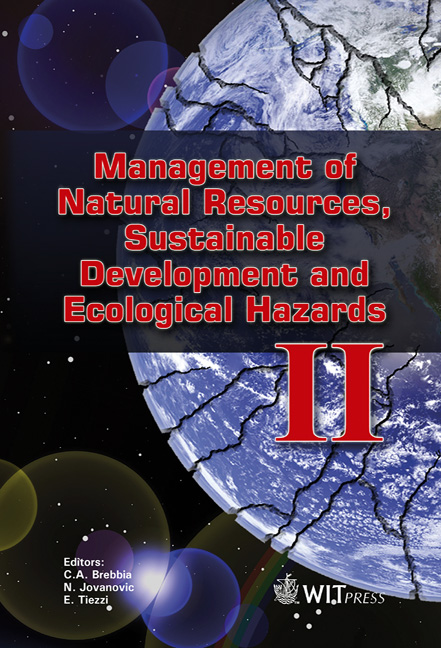Biofiltration Of Methane: Effect Of Temperature And Nutrient Solution
Price
Free (open access)
Transaction
Volume
127
Pages
7
Page Range
239 - 245
Published
2009
Size
490 kb
Paper DOI
10.2495/RAV090211
Copyright
WIT Press
Author(s)
C. Menard, A. Avalos Ramirez, J. Nikiema & M. Heitz
Abstract
Methane is a greenhouse gas (GHG) 21 times more contributing to global warming than carbon dioxide (CO2) and originates mainly from the energy, agriculture and landfill sectors. Methane can be valorized via combustion or transformed by catalytic processes into products like methanol. When valorization cannot be applied because of inappropriate flow rates or methane concentrations, biofiltration is a biotechnology well adapted to control the methane emissions. Biofiltration is a triphasic biotechnology, which uses microorganisms to reduce pollutants like volatile organic compounds (VOCs) or volatile inorganic compounds (VICs) or GHG like methane. Several studies have been published over the last three decades about VOC and VIC biofiltration, but fewer studies are available about methane control. At the Université de Sherbrooke, research is being conducted to control methane emissions originating from landfills or livestock productions. The biofilter used in this study is a laboratory-scale bioreactor of 0.018 m3 divided into 3 sections. An inorganic packing material is used as the filter bed and a nutrient solution is supplied to irrigate the biofilter once daily. The objective of the present study is to determine the operating conditions to obtain high removal efficiencies at methane inlet concentrations around 7000 ppmv. The biofilter is operated under a nitrogen concentration of 0.5 gN/L and an inlet flow rate of air/methane mixture of 0.25 m3/h. The parameters tested are the temperature of the bed filter and the amount of nutrient solution supplied to the biofilter. Better performances are obtained in the temperature range of 28-30°C with an elimination capacity of 39 gCH4/m3/h for an inlet load of 67 gCH4/m3/h. Reducing the daily amount of nutrient solution from 1500 to 250 ml/d affects the biofilter as it provokes a clogging phenomenon. The best
Keywords
biofiltration, methane, temperature, nutrient solution, air pollution, environment





